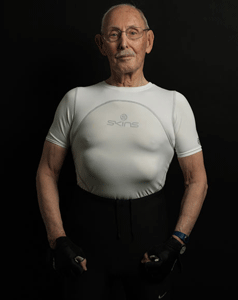 The over 50s currently account for 80% of the wealth of the UK – some £300 billion and spending by households including someone over the age of 65 is £109 billion. These figures will only get bigger as the shift towards an ageing population gathers pace.
The over 50s currently account for 80% of the wealth of the UK – some £300 billion and spending by households including someone over the age of 65 is £109 billion. These figures will only get bigger as the shift towards an ageing population gathers pace.
Today there are 10.3m people in the UK aged over 65, by 2020 that figure will be 12.5m and on current projections that will have increased to 16m by 2030.
Within that group, older segments are the fastest growing and by 2050 it is estimated that there will be more than a quarter of a million centenarians in the UK.
But this growth isn’t confined to the UK.
For example, in the US, the number of people over 50 will have tripled by 2030.
Despite this huge opportunity, most brand owners have been too busy chasing younger customer segments to stop and think about the significance that demographic changes are making on their market segment.
They’ve made wide-sweeping assumptions about the brands that over 50s consume and of course they’ve been proven wrong, a point I make in my latest book, High Impact Marketing That Gets Results.
New research just published by IAB Europe surveyed the behaviour of 51,700 ‘silver surfers’ across 28 countries.
It found that the over-55s spent 39% more time online in 2012 than was the case in 2004, that 77% of them regularly visited news sites on the web and 43% said that the internet was important to them when deciding where to buy a financial services product, book a flight or holiday (48%) and 23% of those who owned a smartphone would do use this to do their shopping online.
So much for so-called the ‘digital divide. There doesn’t seem to be much evidence here.
 Meet ‘John’ (it’s not his real name). He’s the fine looking fella in this picture.
Meet ‘John’ (it’s not his real name). He’s the fine looking fella in this picture.
You may think he’s not your “typical” 92-year old as he’s in tip top shape.
But then ‘John’ is challenging all of us to confront the stereotype image of what we think he should look like at his age, isn’t he?
He says: “I had a crisis at 85. I looked at myself in the mirror one day and saw an old man. I was overweight, my posture was terrible and there was skin hanging off me where muscle used to be. I looked a wreck. So in my late-80s I joined a bodybuilding club. There’s no research into bodybuilding for the over-80s, so it’s been an experiment. With weight lifting and protein shakes my body began to change. It became broader, more V-shaped and my shoulders and biceps became more defined. People began to comment on how much younger I looked and my new muscular frame drew a lot of admiring glances from women.”
Amazing, right? Well, not that amazing really. Why not should women fancy ‘John’?
‘John’ isn’t the only person in his 90s who feels there was still mileage left on his clock.
He stopped thinking about checking into ‘God’s waiting room’ and got on with enjoying his life and has taken up judo to prevent him from falling badly and to improve his general health and well-being.
It would surprise me that ‘John’ outlives hundreds of men much younger than him but who simply gave up looking after themselves.
The mistake we make as marketers is that we tend to make assumptions that people like ‘John’ will think, act and behave in a certain way.
This may seem obvious, but very few people I know would say they feel as old as they are – and I’m sure you may have the same experience within your own circle of family and friends.
Yet somehow it seems to be forgotten in a commercial context, when all too often young and old are seen almost as separate species, inhabiting different worlds.
It’s time we realised the ‘third wave of marketing’ has arrived and by all accounts it’s going to be around for a long time to come!














Recent Comments